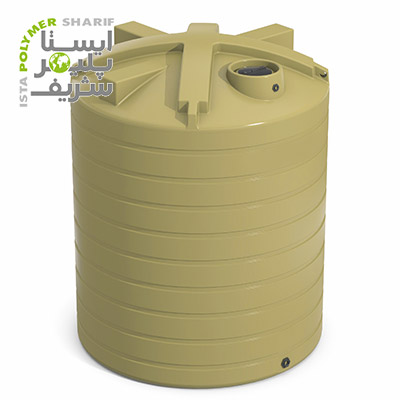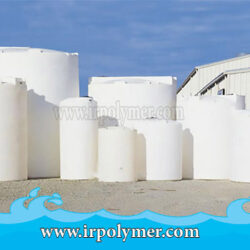The applications of vertical tanks are varied, and depending on the circumstances, you might need to use vertical tanks. Storage tanks are produced in different types and materials. These tanks can be vertical, horizontal, book-shaped, etc., depending on their use and the available space. Moreover, the material of the tank can be chosen based on what will be stored inside and the surrounding environment. Both metal and polymer tanks are manufactured in vertical shapes.
Single-Layer and Multi-Layer Vertical Tanks
Depending on their application, vertical tanks can range from single-layer to triple-layer. Single-layer vertical tanks are typically used for storing fuel and acids. Double-layer tanks are for storing water in enclosed spaces, while triple-layer tanks are designed to store water exposed to sunlight to prevent algae growth. Refer to the article on removing algae from water storage tanks for more information.
Vertical tanks are used in places where horizontal tanks cannot be utilized; in other words, they are chosen when there are space limitations in terms of area but no height restrictions. These tanks can be made from polypropylene tank, polyethylene tank, and polyvinyl chloride.
Vertical storage tanks are made from linear polyethylene, featuring seamless construction. They are designed for both indoor and outdoor environments. Vertical tanks are typically produced in white and blue colors. Their flat-bottom design facilitates easy installation and cost reduction.
Top-grade plastic vertical tanks are used indoors and outdoors for water storage, car washing tanks, biodiesel, liquid fertilizers, reverse osmosis systems, vegetable oils, and they are also made in food-grade and UV-resistant varieties.
One type of vertical tank, as seen in the image below, has a raised top. This type of tank is used for resistance against chemicals. The standard colors are white, black, and yellow.
For storing corrosive acids, the tanks should be made from cross-linked polyethylene to ensure the necessary resistance against corrosive acids.
Specifications of Vertical Tanks
- Easy maintenance
- High impact resistance
- Durability
- High abrasion resistance
- No leakage
- Affordable price
- High corrosion resistance
Vertical storage tanks are preferred over horizontal tanks when space is limited. These tanks require an appropriate foundation such as asphalt or cement. The connections at the top of the tank should be designed so that there is an accessible area near the edge of the tank for easy maintenance. These tanks are manufactured in various heights. When the tanks are very tall, stress on the lower points is high, so they must have adequate strength. The foundation of these tanks is also crucial.
Applications of Vertical Tanks in Industry
- Petroleum products including fossil fuels, gasoline, etc.
- Ammoniated water
- Food industry such as vegetable oils, syrups
- Liquid gas
- Firefighting water storage tanks
Vertical tanks are significant due to their affordable price, easy installation, and rapid production.
Vertical tanks can be used without pontoons for materials with low evaporation rates, such as kerosene. If the stored materials are highly evaporative and volatile, pontoons are used in these tanks. Floating roofs can also be utilized in vertical tanks.



